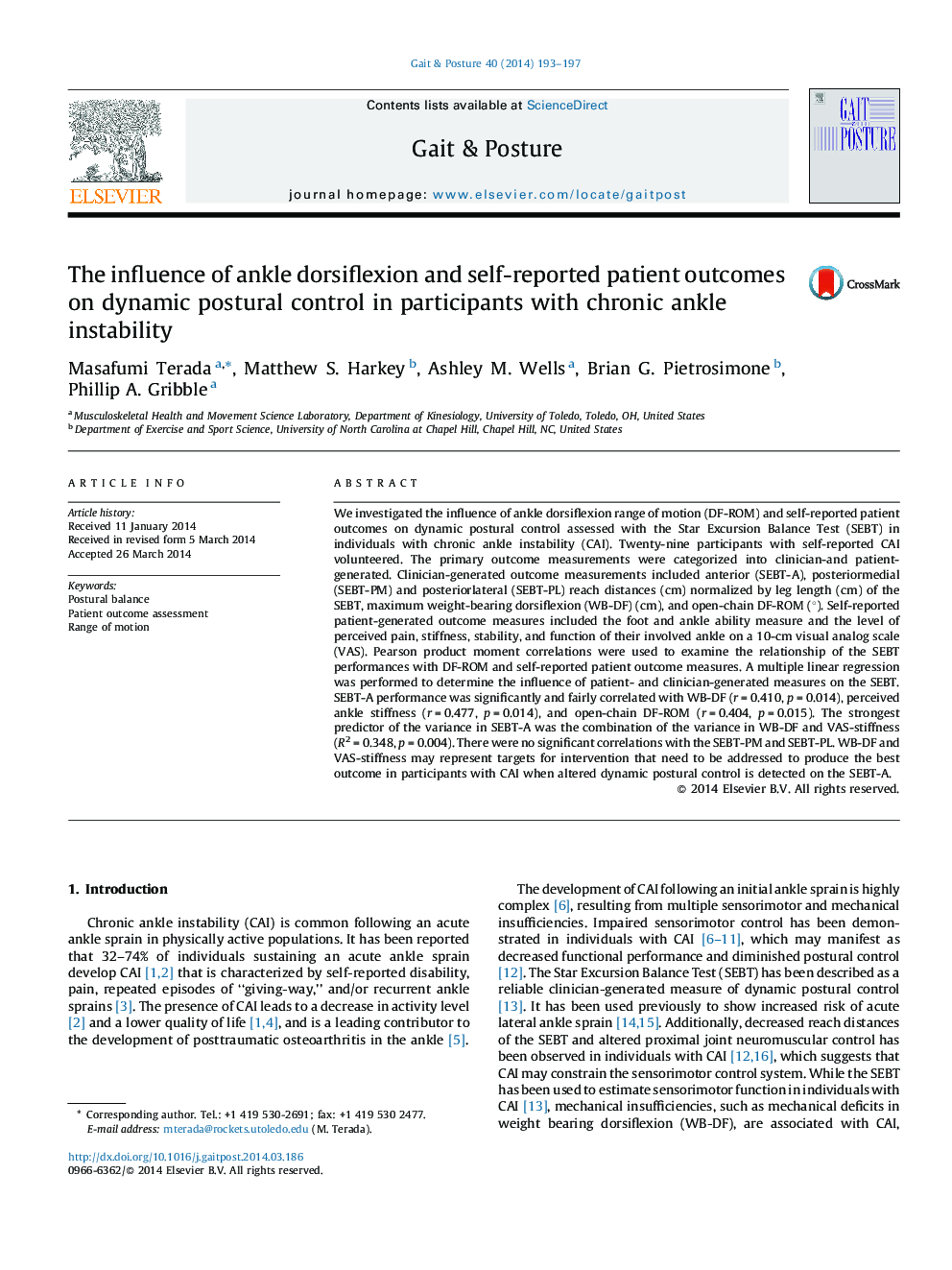| کد مقاله | کد نشریه | سال انتشار | مقاله انگلیسی | نسخه تمام متن |
|---|---|---|---|---|
| 6206499 | 1265647 | 2014 | 5 صفحه PDF | دانلود رایگان |
- Decreased dorsiflexion was associated with diminished dynamic postural control.
- Increased ankle stiffness was associated with diminished dynamic postural control.
- Patient-and-clinician generated measures of function should be assessed separately.
We investigated the influence of ankle dorsiflexion range of motion (DF-ROM) and self-reported patient outcomes on dynamic postural control assessed with the Star Excursion Balance Test (SEBT) in individuals with chronic ankle instability (CAI). Twenty-nine participants with self-reported CAI volunteered. The primary outcome measurements were categorized into clinician-and patient-generated. Clinician-generated outcome measurements included anterior (SEBT-A), posteriormedial (SEBT-PM) and posteriorlateral (SEBT-PL) reach distances (cm) normalized by leg length (cm) of the SEBT, maximum weight-bearing dorsiflexion (WB-DF) (cm), and open-chain DF-ROM (°). Self-reported patient-generated outcome measures included the foot and ankle ability measure and the level of perceived pain, stiffness, stability, and function of their involved ankle on a 10-cm visual analog scale (VAS). Pearson product moment correlations were used to examine the relationship of the SEBT performances with DF-ROM and self-reported patient outcome measures. A multiple linear regression was performed to determine the influence of patient- and clinician-generated measures on the SEBT. SEBT-A performance was significantly and fairly correlated with WB-DF (r = 0.410, p = 0.014), perceived ankle stiffness (r = 0.477, p = 0.014), and open-chain DF-ROM (r = 0.404, p = 0.015). The strongest predictor of the variance in SEBT-A was the combination of the variance in WB-DF and VAS-stiffness (R2 = 0.348, p = 0.004). There were no significant correlations with the SEBT-PM and SEBT-PL. WB-DF and VAS-stiffness may represent targets for intervention that need to be addressed to produce the best outcome in participants with CAI when altered dynamic postural control is detected on the SEBT-A.
Journal: Gait & Posture - Volume 40, Issue 1, May 2014, Pages 193-197
